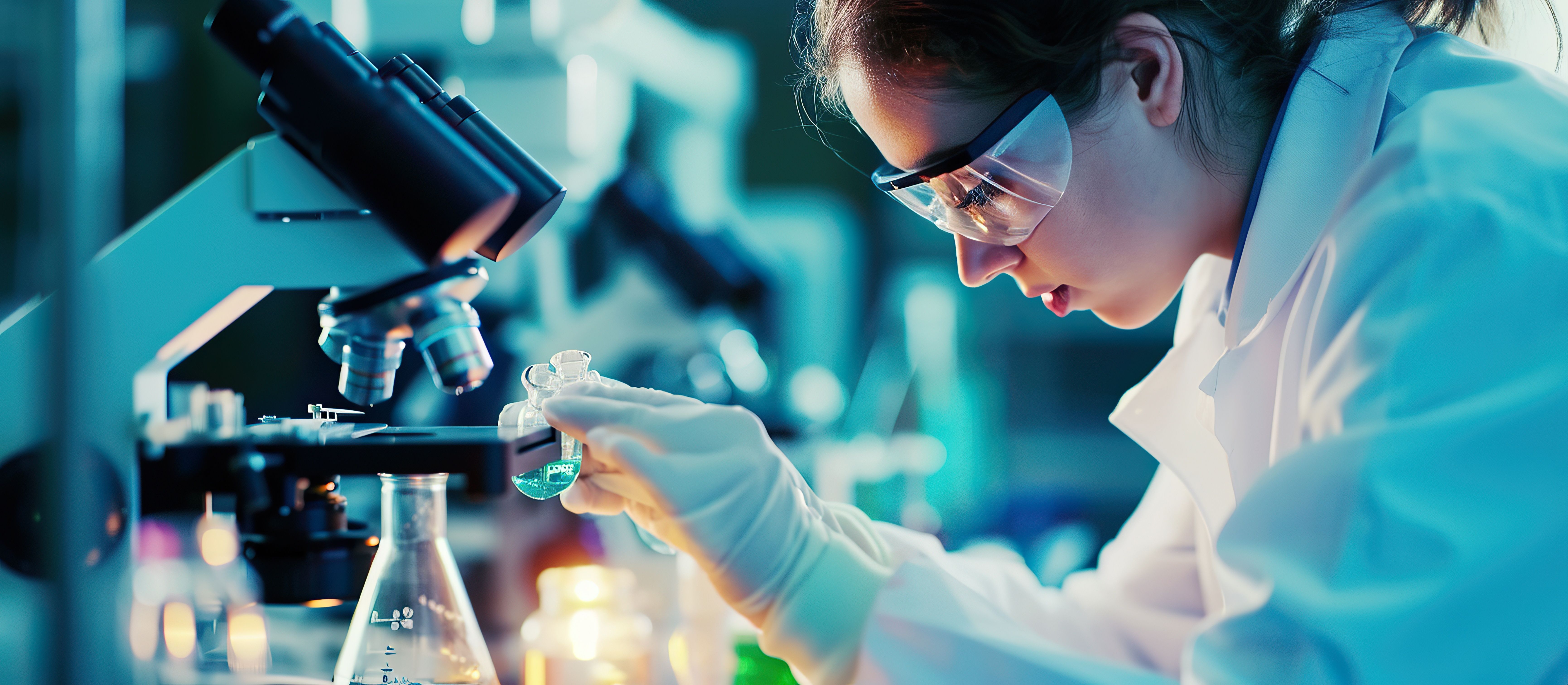Advancements in Raman Spectroscopy Propel Biomedical Science Forward
A recent study published in Food Frontiers shows how Raman spectroscopy is being applied in biomedical sciences and what it means for the industry moving forward.
Biomedical sciences are benefitting from the increased inclusion of Raman spectroscopy in tissue analysis, according to a recent study published in Food Frontiers (1).
Raman spectroscopy is a non-destructive and highly sensitive technique that analyzes biological tissues by providing detailed spectral information about specific molecular structures (2). This method has garnered recognition for its effectiveness in diagnosing a variety of diseases, such as cancer, infections, and neurodegenerative conditions, and predicting surgical outcomes (1).
Biomedical engineers are working in the laboratory. Generated with AI. | Image Credit: © rizky - stock.adobe.com

A multidisciplinary study done by researchers from Macau University of Science and Technology, Harvard Medical School, Purdue University, Suzhou University of Science and Technology, China University of Mining and Technology, and Beijing University of Posts and Telecommunications, explored the many ways Raman spectroscopy is being used in biomedical applications.
The research presents an extensive overview of state-of-the-art techniques in Raman spectroscopy, focusing on innovations like surface-enhanced Raman spectroscopy (SERS), resonance Raman spectroscopy, and tip-enhanced Raman spectroscopy and what these developments have helped enhance. In particular, the research team pointed out how these advancements have shown significant promise in both ex vivo and in vivo medical diagnoses (1).
The researchers discussed in their article how the strengths of Raman spectroscopy make it suitable for application in clinical diagnosis. Raman spectroscopy has the ability to perform label-free and highly sensitive analysis of biomolecules (1). Despite some challenges, the robustness of Raman scattering techniques is poised to expand their diagnostic scope to cover more types of tissue lesions (1).
The study identified several promising future directions for Raman spectroscopy in biomedical applications. One key area is the identification of specific molecular markers for different lesions in human tissue samples (1). Establishing clear relationships between these markers and specific diseases could significantly enhance diagnostic accuracy (1). Additionally, advanced data processing techniques are crucial for extracting meaningful information from the complex spectral data obtained through Raman spectroscopy. Machine learning (ML) has emerged as a vital tool for this purpose, offering unprecedented opportunities to analyze large spectroscopic data sets (1). However, the performance of ML models is highly dependent on the quality of the features used for classification, necessitating extensive feature extraction and selection (1).
In addition to the identification of specific molecular markers for different lesions in human tissue samples, Raman spectroscopy shows potential in diagnosing infectious diseases. The ability of the technique to analyze oxidative stress processes, which often precede pathological or oncological conditions, is notable. These processes can influence the interpretation of spectral data, highlighting the need for comprehensive analysis when using Raman/SERS-based methodologies (1).
However, the final part of the study highlighted the challenges that exist using Raman and SERS-based methodologies in clinical applications. For example, issues such as biocompatibility and toxicity of nanoparticles (NPs) or substrates used in SERS need to be addressed (1).
Another challenge that will need to be solved is reproducibility. The consistency of results can be influenced by the substrate used, prompting the development of standardized protocols for substrate fabrication (1). Innovations in substrate materials and surface modifications are also being explored to enhance reliability and reproducibility (1).
Moreover, the clinical translation of Raman spectroscopy is hindered by factors such as laser safety. High power or long integration times are often required to overcome the weak Raman signal in vivo, posing a risk of tissue damage (1). To that end, researchers are developing approaches to optimize laser parameters, including wavelength and power, to ensure safety while maintaining an adequate signal-to-noise ratio (SNR).
References
(1) Qi, Y.; Chen, E. X.; Hu, D.; et al. Applications of Raman Spectroscopy in Clinical Medicine. Food Frontiers 2024, 5 (2), 392–419. DOI: 10.1002/fft2.335
(2) Horiba Scientific, What is Raman Spectroscopy? Horiba Scientific. Available at: https://www.horiba.com/int/scientific/technologies/raman-imaging-and-spectroscopy/raman-spectroscopy/#:~:text=Raman%20Spectroscopy%20is%20a%20non,chemical%20bonds%20within%20a%20material. (accessed 2024-06-14).
AI and Dual-Sensor Spectroscopy Supercharge Antibiotic Fermentation
June 30th 2025Researchers from Chinese universities have developed an AI-powered platform that combines near-infrared (NIR) and Raman spectroscopy for real-time monitoring and control of antibiotic production, boosting efficiency by over 30%.
Nanometer-Scale Studies Using Tip Enhanced Raman Spectroscopy
February 8th 2013Volker Deckert, the winner of the 2013 Charles Mann Award, is advancing the use of tip enhanced Raman spectroscopy (TERS) to push the lateral resolution of vibrational spectroscopy well below the Abbe limit, to achieve single-molecule sensitivity. Because the tip can be moved with sub-nanometer precision, structural information with unmatched spatial resolution can be achieved without the need of specific labels.